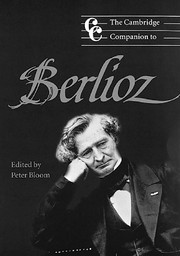2 - The musical environment in France
from Part I - Perspectives
Published online by Cambridge University Press: 28 September 2011
Summary
On 5 June 1821, only five months before a provincial stagecoach deposited an unsuspecting young medical student named Hector Berlioz in the “capital of the world,” Gioachino Rossini's Otello had its overwhelmingly successful Parisian première, sparking the first skirmishes in an all-out paper war that was to be officially “declared” on the very eve of Berlioz's arrival. Written for Naples and based partly on Jean-François Ducis's French adaptation of Shakespeare's tragedy, Otello (1816) was the first of the twenty-nine-year-old Pesarese's serious operas to be produced at the Théâtre Royal Italien by a management still so partial to the older Italian school of comic opera that it had only reluctantly presented Il barbiere di Siviglia two years before. For comparison's sake, Rossini's radically new setting had been faced off against Paisiello's genteel thirty-seven-year-old one, and an aggressive advance publicity campaign waged in the press by the paisiellisti. When the senior Barber closed after only two performances, other comic operas by Rossini, including the clever Italiana in Algeri, were given in eviscerated versions adapted to older Parisian taste yet borrowing so promiscuously from works soon to reach the stage as to hasten Rossini's reputation for repeating himself. When the semi-serious Cenerentola was given in 1822, for example, the over-worked heroine had already been “deflowered” by the buffo Turco in Italia in 1820, her music set to new words. And Torvaldo e Dorliska, a lesser opera semiseria quickly pronounced a “bad parody” of a revolutionary-era rescue opera then enjoying a revival at the Opéra Comique (Cherubini's Lodoïska), had been mounted that same year seemingly to provoke just such unflattering comparisons.
- Type
- Chapter
- Information
- The Cambridge Companion to Berlioz , pp. 20 - 38Publisher: Cambridge University PressPrint publication year: 2000



